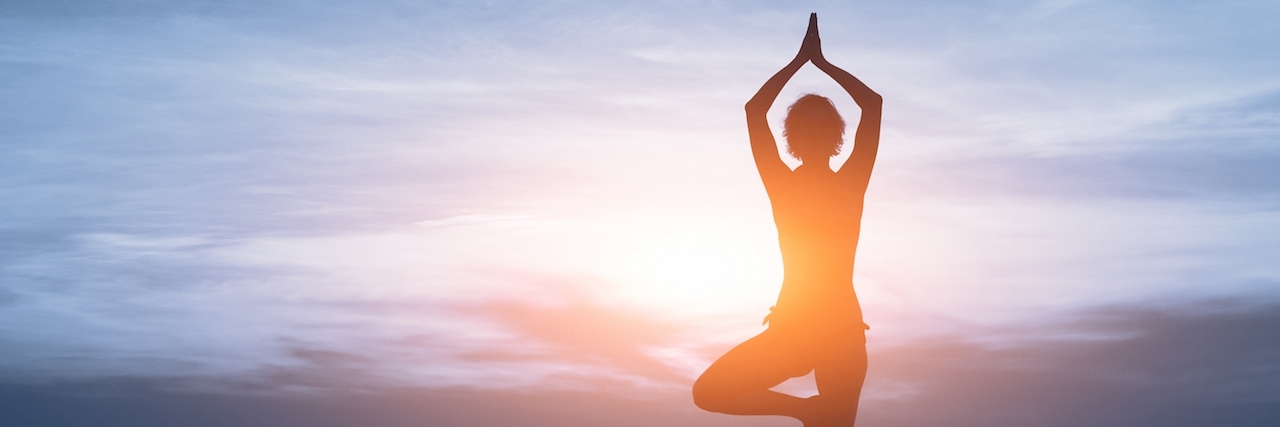I was living in Nepal and had just turned 19 when I had my first manic episode. It wouldn’t be for another five years, when I was 24 and admitted to a psychiatric hospital, that I was diagnosed with bipolar and finally understood what happened half way around the world years earlier.
• What is Bipolar disorder?
What I know now about the “right to refuse” medication and the psychiatric medical process puts my mind at ease, but at the time it was a terrifying whirlwind with the panic of a “One Flew Over the Cuckoo’s Nest” nightmare. The scariest part of the hospital was the time between being in triage and being sent behind the locked door to the ward on the eighth floor. That was when the terror of Nurse Ratchet and forced ECT took hold of me. Once I was on the ward, I wasn’t free, but I was fine. Nurse Ratchett was nowhere to be found, nor any straitjackets. In fact, the nurses often let me into the fully padded “time-out” rooms to meditate.
Once I was discharged, stable and slowly weaned off some of the stronger anti-psychotics, I began to feel my body again. I had to make a choice. I made two actually.
Choice 1: I made a choice to be healthy. Choice 2: I was going to get off the meds as fast as possible. They were not “pure” and I thought to myself, “I’m a yogi, I’m pure.”
Getting healthy immediately after being in a psych hospital looked like sleeping — a lot of sleeping. There were daily visits to an outpatient clinic, and biweekly visits with a psycho-pharmacologist, but mostly sleeping and definitely no yoga. I gained about 45 pounds but I don’t really know how because with all my sleeping (14 to 16 hours a day as a result of the medication and the crash) I don’t remember eating much. I got through it though.
After 18 months under the watchful eye of psycho-pharmacologists, therapists, parents and blood tests, I switched to about 20 B vitamin supplements a day. The theory, untested scientifically, was that bipolar is the result of a vitamin B deficiency. (It is one of many alternatives I have explored over my 10-year period.)
I knew the seasons that made me antsy, the cities that made me feel edgy. I guarded my sleep like a dragon with its treasure. During the “extra-sensitive” times, I would walk around the city, subways and streets with my headphones on at all times. After three months of “extra sensitive” time, no matter how hard I willed these supplements to work — they weren’t. I could feel my mind racing and my sleep dwindling.
I had to make another choice — one I didn’t want to make. Taking prescription medication was not easy. I had a hard time putting anything but natural products on or in my body. I wasn’t always like this, in high school I was taking other “supplements” but my partying days long behind me. I traded in ecstasy for the ecstatic chant.
I liken bipolar disorder to an addiction — you have a genetic vulnerability and can be in recovery for years but the potential of a relapse may always exist. As time passes the anxiety of a relapse lessens, but the potential is always present. Often times people stop taking their medicine when they feel better for just that reason — because they feel better.
But this isn’t an option, the medicine isn’t a cure — it’s just a stabilizer.
The idea I was facing “life without parole” with Lithium didn’t make me feel healthy. In fact it made me feel sick. But I chose to take the medication.
I came to understand Lithium is an element, one you can find on the periodic table. It comes from the Earth. One time, when I was driving across the country, I stopped at these hot springs in Colorado that are famous for their healing waters. Their secret healing property — lithium is in the water.
Every choice has an effect. There are side effects to my choice. What makes it hardest to practice yoga is the vertigo. It’s a scary feeling making twists, inversions and even simple backbends feel impossible. Sometimes I don’t want to face myself in comparison to what I was able to do only a few years ago. That’s when it is time to take a pause, a breath and feel what the moment is — vulnerable and present. Brene Brown states in her book “Daring Greatly,” “Shame hates having words wrapped around it. If we speak shame it begins to wither.” That’s another side effect, learning to confront shame fearlessly.
The lessons I have learned from yoga, like the form of my practice and my health, is that they look nothing like I thought they would. They are both a dialogue. When I began my yoga practice I had a very clear idea of what a “yoga practice” looked like. It involved a mat, a teacher, a studio and $20 per class fee. 15 years later my practice resembles more of what I saw in Nepal than what I ever saw in New York. My practice looks like meditation, lots of it, gentle poses often in my home and lots of prayer. I look back now when I thought I had full moving joints. I had total “choice” but really I didn’t even begin to know what that was until I actually had to choose.
A version of this piece was published on Elephant Journal.

